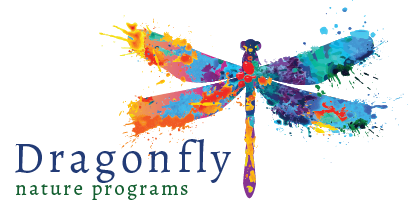Our books are designed to extend the lessons learned in programs like those offered by Dragonfly Nature Programs into the home, fostering a lifelong love for nature and reading. -Steven Long of 12 Willows Press
Rethinking the 3-Rs
…let’s rethink our classroom practices. Let’s break the mold of what was. While children all over the world express environmental issues and climate change in particular as sources of anxiety, let’s get in the game, ease their anxiety, model sustainable practices and acknowledge that their anxiety is not fruitless.
Ours to Protect
A couple of months ago, Dragonfly Nature Programs went plastic neutral. While we have always purposely designed lessons that minimize waste, waste is very hard to avoid.
Citizen Science: Project Squirrel
We sat in silence for a bit to listen for squirrel calls. I asked the students if they had any ideas why we weren’t seeing many squirrels and one student thought it could be because squirrels aren’t so active during that time of day (around 4 pm). Squirrels are diurnal, meaning they are active during the day and sleep at night. Others thought the squirrels knew we were looking for them so they wanted to hide from us. All great theories.
A Nature Lover's Bookshelf For Kids II
Learning Cycle
My own learning cycle would not have progressed as it has if I kept inside a vacuum, unwilling to change as a reflection of the students I’ve met, the teachers I’ve worked with or the professional development I’ve taken part in. Likewise, life cycles, of any animal, do not occur without influence from outside forces.
My Found Object
I set out to collect the best available lesson plans for teachers on the topic of plastics and sustainable choices. What I found was too much of the same: reduce, reuse, recycle with an all too heavy emphasis on recycle. But recycling is: not available in all localities, not applicable to all items, including all types of plastics, and is an underfunded, underutilized tool. It can’t be what we continue to teach our youth.
May I Please Suggest: Dianna Hutts Aston
A Nature Study on Gratitude
I write to remind you, that we are more closely dependent on our Planet Earth than we are typically, consciously, willing to acknowledge. Wake up to this, for your own wellbeing, and so that you can help me teach our children that only a healthy Earth can supply our survival needs and our Earth is only as healthy as we humans, allow it to be.
A Nature Lover's Bookshelf for Kids I
Books are a terrific way to reinforce the nature education you are providing in your classroom or as a gateway into the world of nature. Books can introduce new concepts while reading to the whole group or allows a curious child time to visit with a book on their own; either way, having a bookshelf stocked with stories and illustrations about our natural world is essential to any nature based classroom.
Teaching Climate Change: a personal reflection
My first misstep in teaching climate change is thinking it’s too controversial, too sad or too much for students to learn. There is a small piece of this puzzle that every student at any age can learn, and by introducing the topic scientifically and at the appropriate developmental level, it’s a lesson worth teaching and learning.
Strategies for Connecting with Nature in the Virtual Classroom
Teachers, I wanted to find ways to support your virtual work and so I’ve compiled some wonderful tools to help you connect children with nature during this unusual year. I have a little something for everyone this month, from pre-K to AP high school classrooms. The resources shared are all designed to support outdoor education and each has its pros and cons which I’ve listed to help you make the best choice for your classroom.












